What is a Hognose Snake?
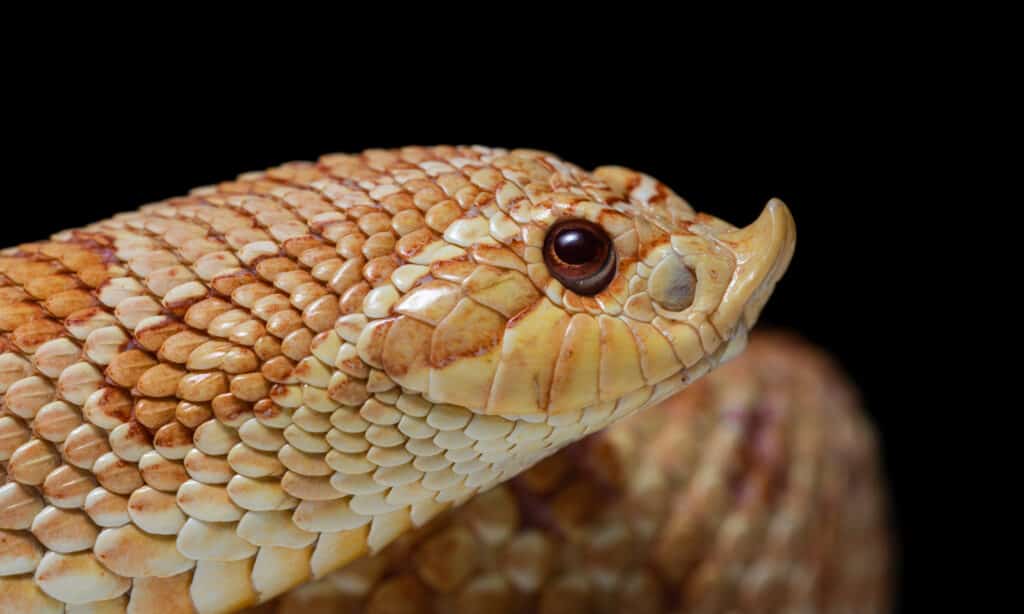
The rostral scale on a hognose snake is upturned. This unique adaptation helps hognose snakes dig and burrow.
©Ana Dracaena/Shutterstock.com
The designation of hognose refers to any snake with an upturned scale on the nose. While there are 14 different snakes classified as hognose, only three have hognose in their names: the Western, Southern, and Eastern hognose. Hognose snakes are of the genus Heterodon, family Colubridae. Regardless of their names, all hognose snakes have the same start in life. They’re laid in a clutch of up to 20 eggs. Mother snakes dig holes to lay their eggs, which protect the baby snakes while they develop. What happens after a baby hognose snake hatches?
Eggs Develop in 60 Days
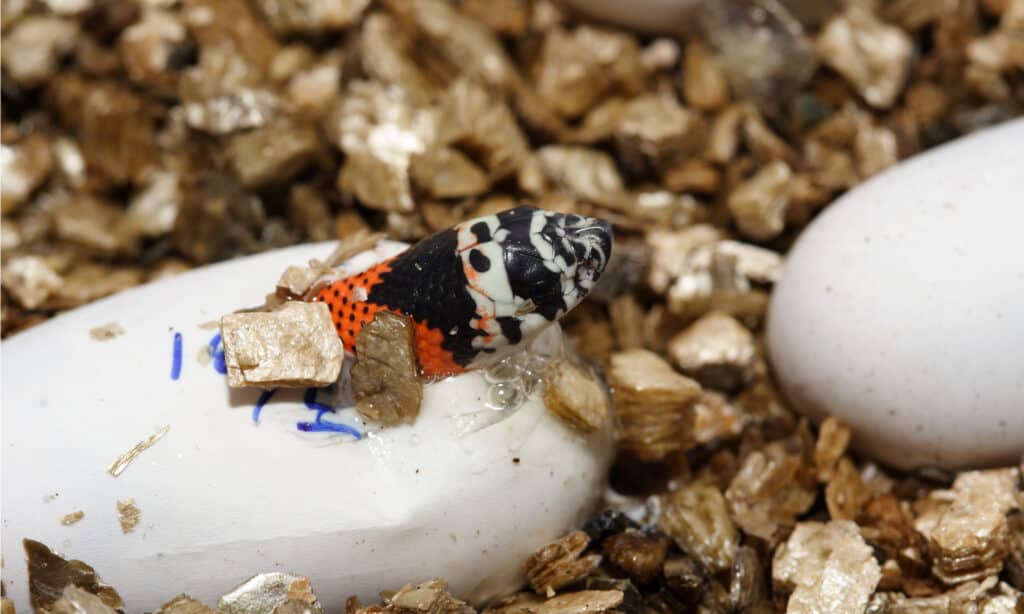
A baby hognose snake, Lystrophis pulcher, can be one of many colors and have various patterns.
©Borhuah Chen/Shutterstock.com
Hognose snakes lay their eggs at the end of summer, in June or August. Female hognose snakes choose their nesting sites carefully. Nests are often found under rocks or buried in sunny areas. The eggs, which have little to no embryonic development when laid, will take around 60 days to mature. Conversely, some Eastern hognose snakes have been documented to incubate their eggs, with the mother burying herself around the clutch. The hatchling hognose snake can be as small as five inches long and rarely more than eight inches long. Hognose babies use their egg teeth to break the thin, leathery shell of their eggs. Once they hatch, they shed their skins and their egg tooth. Egg teeth are small, square teeth located in the front of the mouth.
They Rarely Meet Their Parents
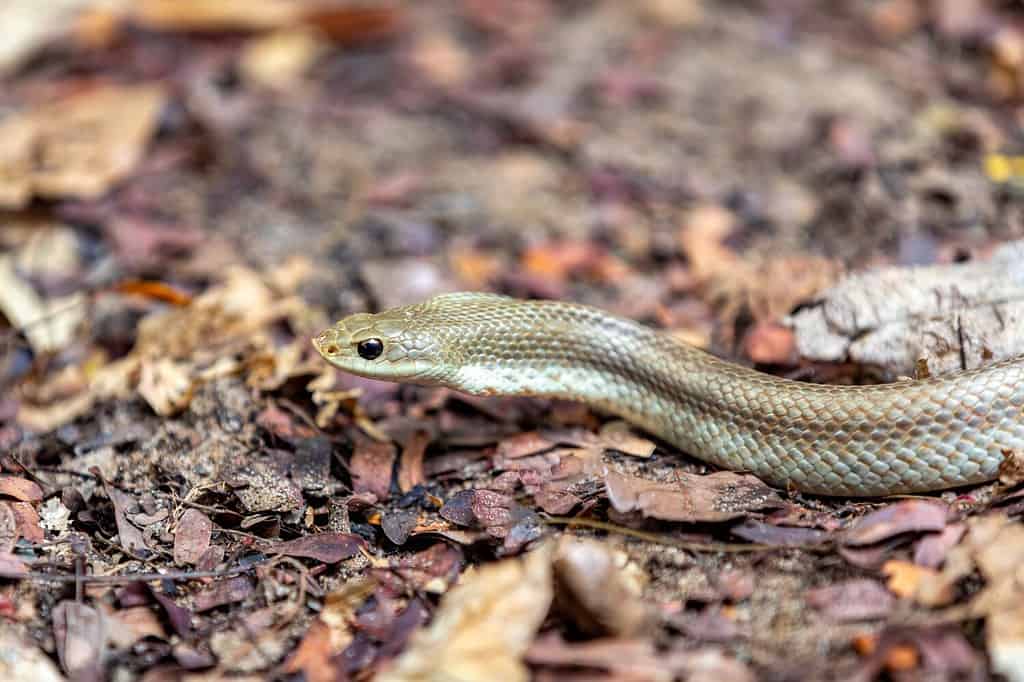
Hognose snakes create their burrows and hunt for food from the day they hatch.
©Artush/Shutterstock.com
Baby hognose snakes are independent from the time they hatch. Baby hognose snakes prey on insects and small amphibians. As they grow, small rodents and frogs also become part of the hognose diet. Unlike some snakes, hognose snakes are most active during the day. They live solitary lives, with each hognose claiming their spaces. However, hognose snakes are not territorial. Several wild snakes may live in the same area.
They Live in a Broad Range of Habitats and Regions

The plains hognose snake has a wide head and an upturned snout.
©Amanda Guercio/Shutterstock.com
Hognose snakes prefer sandy soil, coastal areas, and open fields. In agricultural areas, hognose snakes are often found in fields and farming areas. Baby hognose snakes will use their upturned noses to burrow in soft substrate. These snakes live in a range that covers both United States coasts, as well as the coastal southern United States to Ontario, Canada. They’re also native to Mexico, South America, and Madagascar.
Hognose Snakes Brumate
Hognoses brumate in their burrows for two to four months each year as temperatures drop. Brumation is the term for a cold-blooded animal that slows their natural body processes through winter. While similar to hibernation, a behavior seen in some warm-blooded animals, brumation is typically shorter and less intense. Snakes and other reptiles that brumate exhibit sluggishness, loss of appetite, and minimal movement. Science indicates that brumation may assist in regulating hormones within a reptile’s body. This helps to ensure successful mating, healthy offspring and extend the reptile’s life.
Hognose Snakes Eat Toxic Frogs
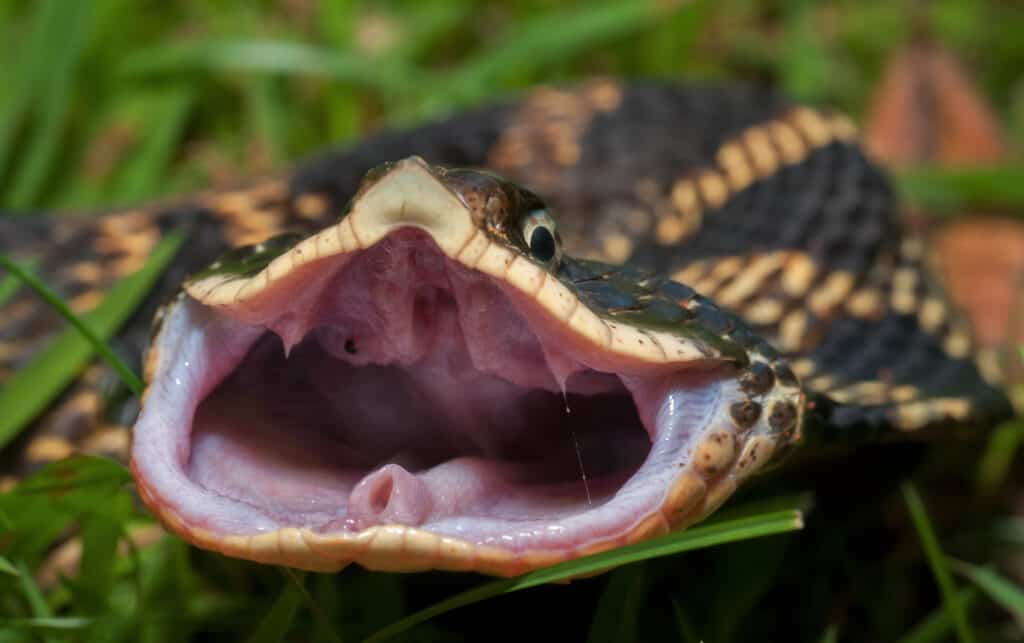
Eastern Hognose snake posing flattened out and gaping with mouth open and rear fangs exposed.
©Mike Wilhelm/Shutterstock.com
The toxin excreted by frogs does not affect hognose snakes. Moreover, hognose snakes can neutralize these toxins. This adaptation makes frogs one of the most favored meals on a Hognose menu. While not born with venom, baby hognose snakes rapidly develop a mild venom in their saliva. Unlike other venomous snakes, Hognose snakes do not have hollow fangs that inject venom. Instead, they have two long, curved rear teeth that impale their prey. The venom within the saliva of hognose snakes is strong enough to immobilize prey but too weak to seriously harm humans. However, some humans have reported itching and sensitivity in response to a hognose snake bite.
Where a Hognose is Born Changes its Appearance

The Southern Hognose snake can sometimes display vivid red coloration.
©Chase D’animulls/Shutterstock.com
Western hognose snakes are usually a light tan to brown color with darker brown, irregular spots. Adult Western hognoses can reach two feet in length. Eastern hognose snakes are also tan and brown, with some yellow and orange. Some Eastern hognose snakes display no markings and are black. Eastern hognose snakes can reach a length of up to three feet long. Southern hognose snakes display tan, red, and brown scales. The Southern hognose snake is the smallest of these snakes and has a higher-turned scale on its snout. In snakes, color variations are called morphs. Some snake breeders combine morphs found in the wild to create new morphs that only exist in captivity.
Hognose Snakes are Mimics
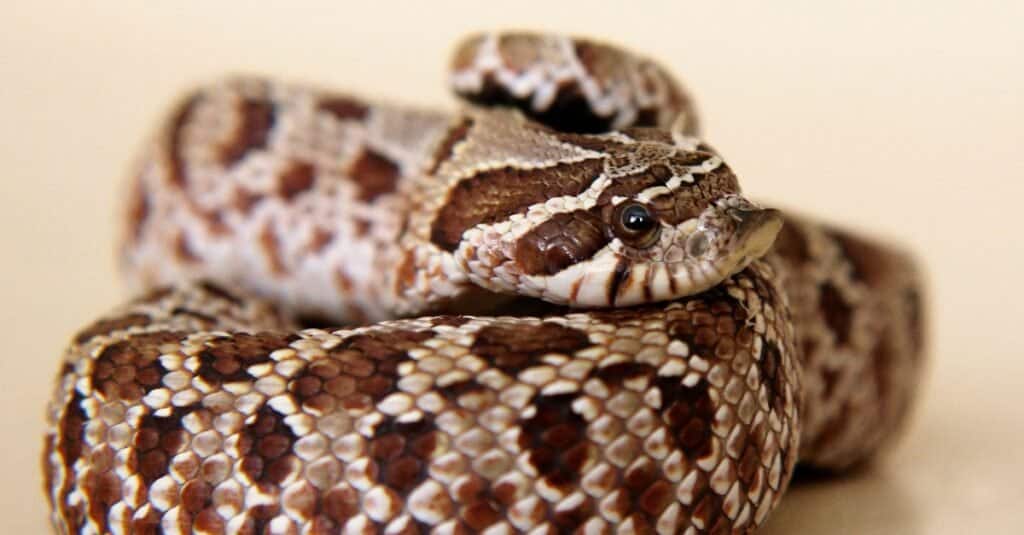
If you ignore the adorable face, many hognose snakes could be mistaken for rattlesnakes at first glance.
©iStock.com/Iuliia Morozova
Hognose snakes pretend to be rattlesnakes for protection. When they feel threatened, hognose snakes behave like more dangerous snakes. Hognoses will hiss loudly and flatten the back of their necks in an attempt to intimidate predators. Some hognoses will even make a rattling noise while shaking their tails. Baby hognose snakes demonstrate this defensive posturing from hatching.
Hognose Snakes Play Dead
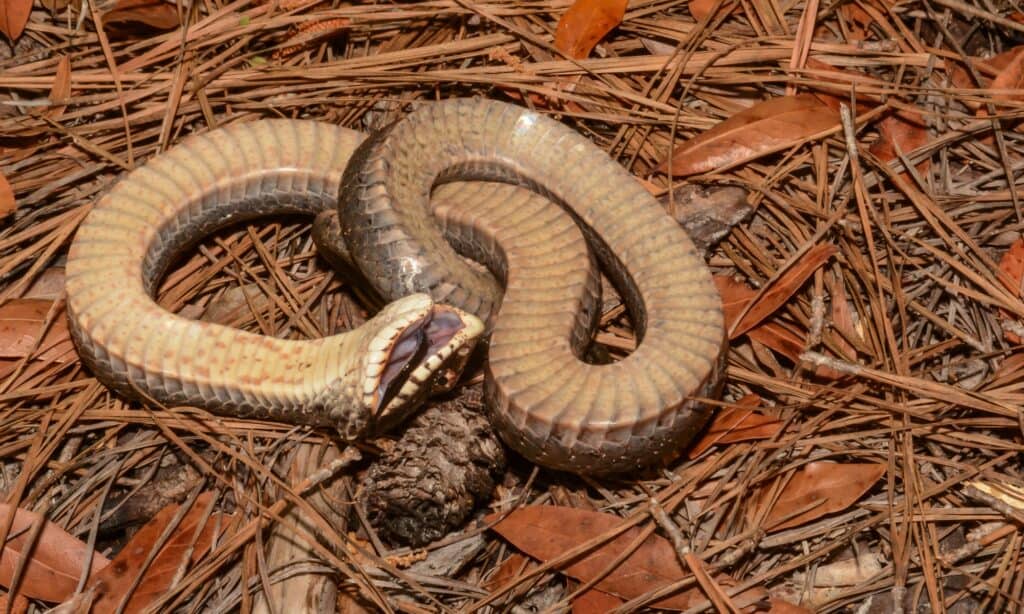
Don’t worry, he’s just pretending. Hognose snakes are convincing actors and play dead as a deterrent to predators.
©iStock.com/JasonOndreicka
Despite their mimicking, hognose snakes rarely bite. If a predator or human advances on a hognose, the snake will roll over, belly up, and play dead. Some hognose snakes even open their mouths and dangle their tongues to maintain the illusion.
Baby Hognose Snakes Take 2 Years to Reach Adulthood

©Usha Roy/Shutterstock.com
On average, a baby hognose snake will need two years from hatching before reaching adulthood. Once a baby hognose is an adult, it will measure approximately 21 inches long. This gives the hognose one of the shortest immature stages among snakes, which average two to four years to reach adulthood. A wild hognose snake has a life expectancy of up to twenty years.
The photo featured at the top of this post is © reptiles4all/Shutterstock.com
Discover the "Monster" Snake 5X Bigger than an Anaconda
Every day A-Z Animals sends out some of the most incredible facts in the world from our free newsletter. Want to discover the 10 most beautiful snakes in the world, a "snake island" where you're never more than 3 feet from danger, or a "monster" snake 5X larger than an anaconda? Then sign up right now and you'll start receiving our daily newsletter absolutely free.
Thank you for reading! Have some feedback for us? Contact the AZ Animals editorial team.






